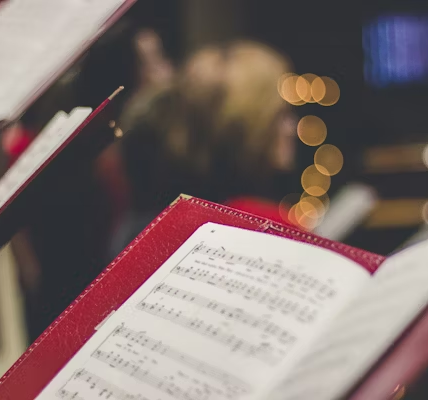The Moldova flag is a powerful emblem of the country’s history, culture, and aspirations. A tricolor design that resonates deeply with its citizens and reflects Moldova’s unique identity on the global stage, the flag is much more than a simple piece of cloth. This article delves into the origins, symbolism, and significance of the Moldova flag, exploring its place in history, politics, and the everyday lives of Moldovan people.

Early Symbols and Influences
The history of Moldova’s national flag is closely tied to its geographical position and political landscape. Moldova, situated between Romania and Ukraine, has been influenced by various empires and cultures over the centuries, including the Ottoman Empire, the Russian Empire, and the Soviet Union. Each of these periods left its mark on the region’s heraldry and symbols.
The Birth of the Modern Flag
The modern flag of Moldova was adopted on April 27, 1990, during the country’s move towards independence from the Soviet Union. It is inspired by the Romanian tricolor of blue, yellow, and red, reflecting Moldova’s shared cultural and historical heritage with Romania. However, the addition of the national coat of arms in the center distinguishes the Moldovan flag, making it a unique representation of the nation’s sovereignty.
Design and Symbolism of the Moldova Flag
The Moldova flag consists of three vertical stripes:
Blue: Symbolizing freedom and the open sky.
Yellow: Representing prosperity, wealth, and the fertile lands of Moldova.
Red: Denoting the courage, strength, and determination of the Moldovan people.
This tricolor pattern is a nod to Moldova’s historical ties with Romania, which shares a similar flag.
The Coat of Arms
At the heart of the flag lies the Moldovan coat of arms, a key distinguishing feature. The emblem includes:
A golden eagle: Holding a cross in its beak and an olive branch and scepter in its talons, representing faith and the authority of the state.
A shield on the eagle’s chest: Divided into two parts. The upper section features an aurochs (a symbol of strength and resilience), while the lower section displays a rose, crescent, and star, symbolizing harmony and cultural diversity.
This intricate coat of arms encapsulates Moldova’s identity, blending elements of strength, peace, and cultural unity.
Political and Cultural Significance
The Moldova flag is a unifying symbol for its citizens, representing their shared heritage and aspirations for a prosperous future. It is prominently displayed during national holidays, cultural events, and political gatherings, fostering a sense of pride and belonging.
International Recognition
Since its independence in 1991, Moldova’s flag has served as a visual representation of the nation on the global stage. Whether flown at international events or displayed at embassies, the flag asserts Moldova’s sovereignty and unique identity among the world’s nations.
The Flag in Everyday Life
In Moldova, the flag is not confined to official buildings and events. It is often seen in schools, homes, and community centers, reflecting its importance in daily life. Citizens frequently use the flag during celebrations, sports events, and protests, showcasing its role as a symbol of unity and expression.
The Soviet Era
Before adopting its current flag, Moldova’s territory was part of the Soviet Union, and its flag featured the hammer and sickle emblem on a red background with a green stripe. This design symbolized Moldova’s integration into the Soviet system while acknowledging its agricultural roots.
Transition to Independence
The late 1980s and early 1990s were marked by Moldova’s push for independence. As the national movement gained momentum, the need for a distinct flag became apparent. The adoption of the tricolor design with the coat of arms signified a break from Soviet influence and a return to Moldovan cultural roots.
Modern-Day Variations
While the national flag remains consistent, variations are used for specific purposes. For instance, military and governmental flags may include additional elements or inscriptions, reflecting their particular roles within the state.
Shared Heritage
The striking similarity between the flags of Moldova and Romania is no coincidence. Both nations share a deep cultural and historical connection rooted in their common ancestry as part of the principality of Moldavia.
Key Differences
The primary distinction lies in the presence of the coat of arms on the Moldovan flag, absent from the Romanian flag. This addition emphasizes Moldova’s sovereignty and unique identity, despite the shared tricolor design.
Debates on the Flag’s Design
Over the years, there have been discussions about the Moldova flag’s design, particularly its resemblance to Romania’s flag. Some political factions advocate for a redesign to further differentiate Moldova, while others view the similarity as a symbol of unity with Romania.
Use in Political Movements
The flag has also been a focal point in political debates, particularly regarding Moldova’s orientation towards Europe or closer ties with Russia. Its symbolism is often invoked in discussions about national identity and geopolitical alignment.
Teaching National Pride
In Moldovan schools, the flag plays an essential role in teaching students about their country’s history and values. Lessons often include discussions on the flag’s symbolism and significance, fostering a sense of national pride among the younger generation.
Promoting Unity
Educational programs frequently use the flag to highlight the importance of unity and collaboration among Moldova’s diverse communities. By understanding the flag’s meaning, students are encouraged to embrace their shared identity and work towards a harmonious society.
In Summary
The Moldova flag is more than just a national symbol; it is a testament to the country’s history, culture, and aspirations. From its tricolor design and intricate coat of arms to its role in everyday life and international representation, the flag embodies the essence of Moldova. As the nation continues to navigate its path in a rapidly changing world, the flag remains a steadfast reminder of its resilience, unity, and identity.
FAQs
What Does the Moldova Flag Represent?
The Moldova flag symbolizes the country’s independence, culture, and history. Its three vertical stripes—blue, yellow, and red—represent freedom, prosperity, and courage. The addition of the coat of arms, featuring an eagle and an aurochs, highlights Moldova’s unique identity and sovereignty.
Why Does the Moldova Flag Resemble the Romanian Flag?
The similarity between the Moldova and Romanian flags stems from their shared historical and cultural roots. Both countries were once part of the principality of Moldavia and share the same tricolor pattern. However, the Moldovan flag distinguishes itself by including the national coat of arms in the yellow stripe.
When Was the Moldova Flag Adopted?
The current flag of Moldova was officially adopted on April 27, 1990. This move marked the country’s transition towards independence from the Soviet Union.
How Is the Moldova Flag Used in Everyday Life?
The flag is prominently displayed on national holidays, government buildings, and public institutions. It is also a central symbol during sports events, cultural festivals, and political gatherings. Moldovan citizens often use it to express national pride and unity.
What Are the Dimensions of the Moldova Flag?
The official proportions of the Moldova flag are 1:2, meaning its width is twice its height. The coat of arms is centrally placed in the yellow stripe, ensuring symmetry and balance in the design.
How Does the Moldova Flag Differ from Its Soviet-Era Predecessor?
During the Soviet era, the flag of the Moldavian Soviet Socialist Republic featured a red background with a green stripe and the hammer and sickle emblem. The adoption of the current flag marked a departure from Soviet symbols, embracing Moldova’s cultural heritage and independence.
To read more, click here



